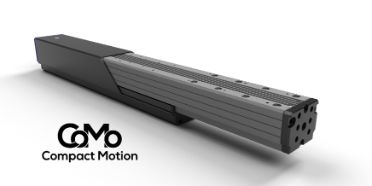Innovative linear motor
Together with Compact Motion, a new type of motor technology has been developed that enables compact and fast linear motors with optimised heat dissipation. This reduces costs and installation effort for industrial production facilities.
Factsheet
- Schools involved School of Engineering and Computer Science
- Institute(s) Institute for Human Centered Engineering (HUCE)
- Research unit(s) HUCE / Laboratory for Robotics
- Funding organisation Innosuisse
- Duration (planned) 01.08.2023 - 06.06.2025
- Head of project Prof. Dr. Gabriel Gruener
-
Project staff
Gionata Quadri
Julian Frederik Rösch - Partner Compact Motion GmbH
- Keywords Robotics, Linear axis, Control, Finite elements (FEM), Modelling, Optimisation
Situation
The increasing miniaturisation and individualisation in industrial automation presents machine builders with the challenge of developing drive systems that can operate quickly, precisely and flexibly. Compact Motion pursues the vision of making handling systems more compact, intelligent and powerful in order to reduce the costs of production facilities and increase their productivity. The Rhino-100 linear motor prototype was a first step in this direction. Verification has shown that performance can be further improved through optimised heat dissipation. In addition, there was no suitable test bench for systematically measuring its properties. For vertical operation, the idea is to have an integrated solution that holds the axis in position even when switched off, without relying on external components as is the case with conventional systems. Furthermore, the cabling of multiple axes is proving to be complex and expensive, making a new concept for communication and power supply necessary.
Course of action
To overcome these challenges, Compact Motion worked with BFH to develop a comprehensive approach as part of an Innosuisse project. The initial focus was on setting up a test bench that would enable all the drive characteristics of different axis models to be recorded under horizontal and vertical mounting conditions. At the same time, a model for simulating an integrated counterbalance was developed, which was tested and optimised in several steps. In addition, a thermal simulation model was created, which was used to implement improvements to the drive and then validate them on the test bench. Novel concepts promising simplified cabling and higher system efficiency were also tested in the laboratory. The motor technology was further developed to create the basis for a modular product family and subsequent series production.
Result
The project yielded significant results that overcome the original challenges. The test bench that was developed now provides a flexible measurement system that allows precise characterisation of the linear axes. The integrated counterbalance proved to be a successful concept, which is now protected by patent and represents a significant technical differentiation. Simulation-based optimisations significantly improved the thermal behaviour. In addition, the motor technology was further developed to such an extent that it is suitable for daily use, can be expanded in a modular fashion and enables the transition to series production.

